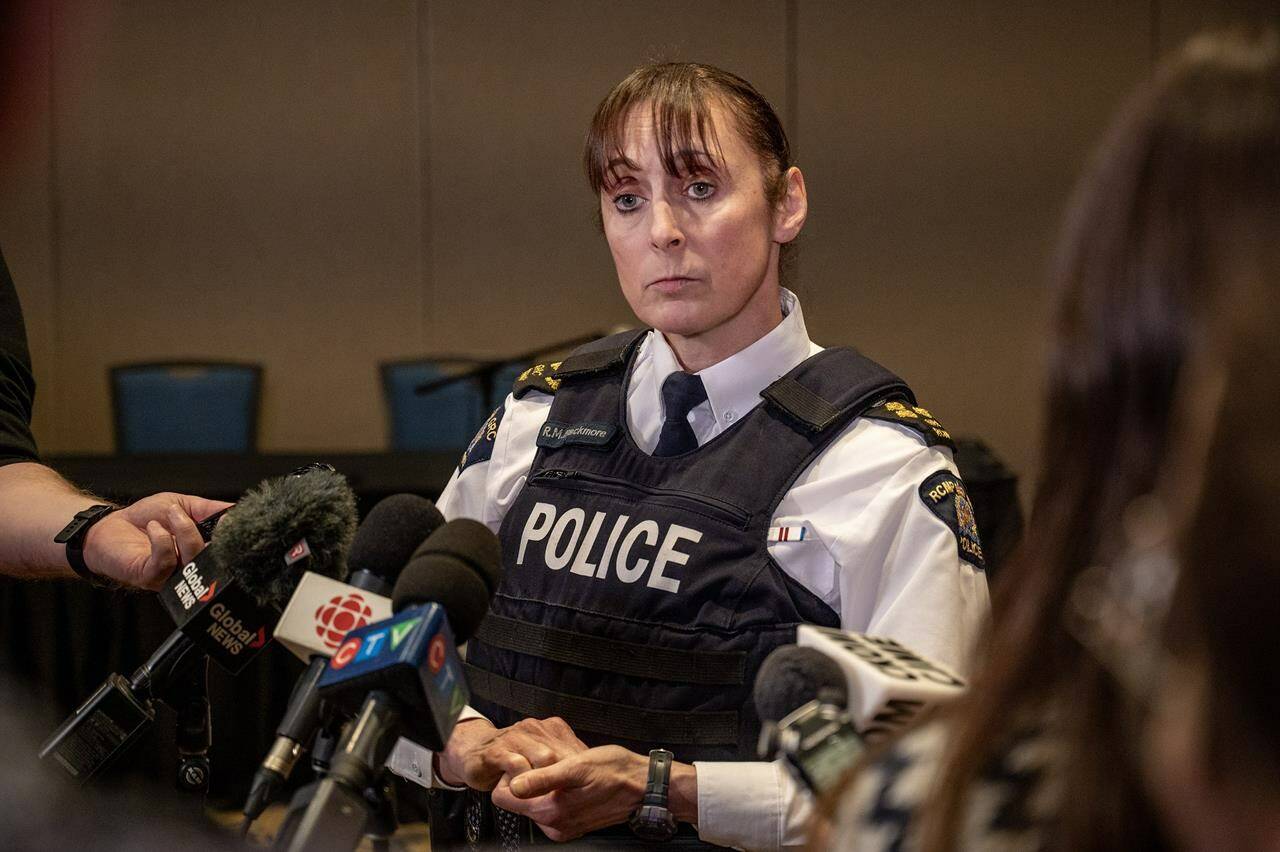A report into how Mounties responded to a mass killing and manhunt in Saskatchewan has found some communication problems but nothing that significantly impacted the outcome.
Police captured Myles Sanderson three days after he killed 11 people and injured 17 others on the James Smith Cree Nation and in the nearby village of Weldon.
Sanderson, 32, died of a cocaine overdose shortly after he was taken into custody.
On Thursday, RCMP released a report, conducted by Mounties in Alberta, assessing the police response in 2022 and recommending improvements.
“On a broad level, the review team did not identify any common underlying circumstance that significantly impeded the RCMP’s ability to manage the response to the (James Smith Cree Nation and Weldon) event,” says the report.
“At the same time, certain areas for growth were identified with the underlying purpose of enhancing responses to future, similar situations.”
The report’s team included an observer from the Federation of Sovereign Indigenous Nations, which represents 74 First Nations Saskatchewan.
James Smith Cree Nation had raised concerns that officers should have responded faster to the stabbing rampage, but the report concluded the response time was appropriate and the first call for dispatch “could not have been streamlined more than it already was.”
The report says the situation unfolded quickly after the first report of the attacks reached the Melfort RCMP detachment before 6 a.m. on Sept. 4, 2022.
One officer was there but had to wait for his partner to arrive at the station. Nine minutes later, they left.
More calls came is as they drove to the First Nation. They arrived in 28 minutes.
As the situation unfolded, RCMP decided to start up its division emergency operations centre, composed of senior management in Regina. But at times, says the report, it was unclear who was in charge.
The confusion was starkly apparent on Sept. 7, when Mounties were chasing Sanderson in a stolen truck. Two lead commanders made the call to force the vehicle off the road, but they did not loop in another commander in charge of overseeing tactics.
The report says it would have taken too long to bring everyone up to speed in that moment, so the move was justified. But it recommends next time RCMP clearly communicate that the division emergency operations centre has overarching authority.
Other communications lapses were also found during the manhunt, which took place on the ground and in the air.
The report says aircrews were inundated with requests from officers, and pilots weren’t sure who they should be taking direction from. This resulted in them flying “with little purpose.”
At one point on Sept. 7, when Sanderson was spotted in the town of Wakaw, all aircraft were down refuelling.
“This caused a delay at a critical time and perhaps highlighted one of the key issues during this incident,” the report says.
These issues could be addressed by having a flight co-ordinator to manage pilots, says the report.
In response to the report, Mounties said they have since changed procedures and will now assign an “air boss.”
The report adds missed communication also happened when some call centre tips on Sanderson’s whereabouts did not reach decision-makers.
The RCMP said in future crises it will embed a criminal analyst and major crimes investigator in its call centre.
It also said it has since implemented a new command structure for large incidents, including better technology to allow investigators to communicate in real time.
The force said it has also purchased radios that work better on James Smith Cree Nation and in the surrounding area.
The report lauded Mounties for helping in the aftermath of the killings, allowing families to grieve and hold ceremonies before bodies were removed for autopsies. Sweats and smudges also took place in the community, and officers kept victims up to date on the status of their homes that required restoration.
The report says there were times when bodies were exposed to onlookers. RCMP have since purchased tents and portable walls that can be used to block viewing.
However, families have said they believe more can be done to improve relationships with James Smith Cree Nation, recommending RCMP attend events and hold regular meetings with leaders.
In response, RCMP said the Melfort detachment tries its best to make event appearances but has a small number of staff. It said it’s committed to helping the community recover.
There have been several others reviews into the stabbings.
A report on why Sanderson was free on statutory release at the time, despite a record of violent assaults, found there was no way to have foreseen his rampage but called for more time for parole board staff to conduct assessments.
A coroner’s inquest into the attacks recommended RCMP fully staff specialized teams and improve their relationship and communication with James Smith Cree Nation.
Another inquest that determined Sanderson died from an accidental overdose while in custody urged more training for police on high-speed pursuits.
READ ALSO: ‘Ready to die’: chilling texts open Saskatchewan stabbing rampage inquest
READ ALSO: Ex-Mountie says hunt for stabbing suspect complicated by vast open space of Prairies

